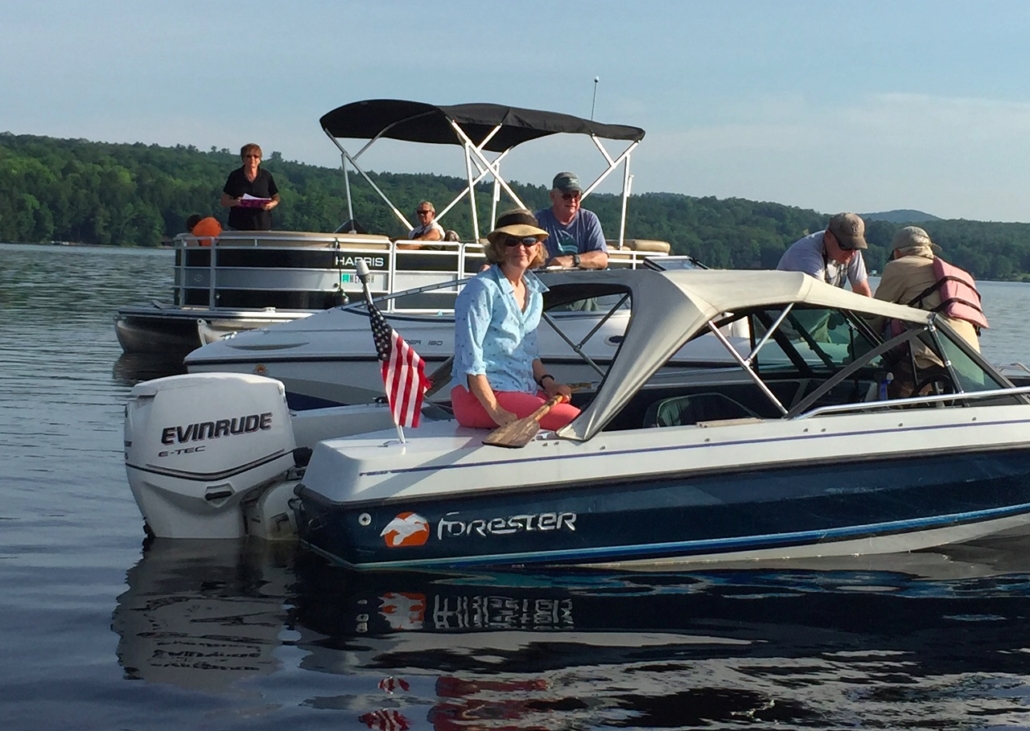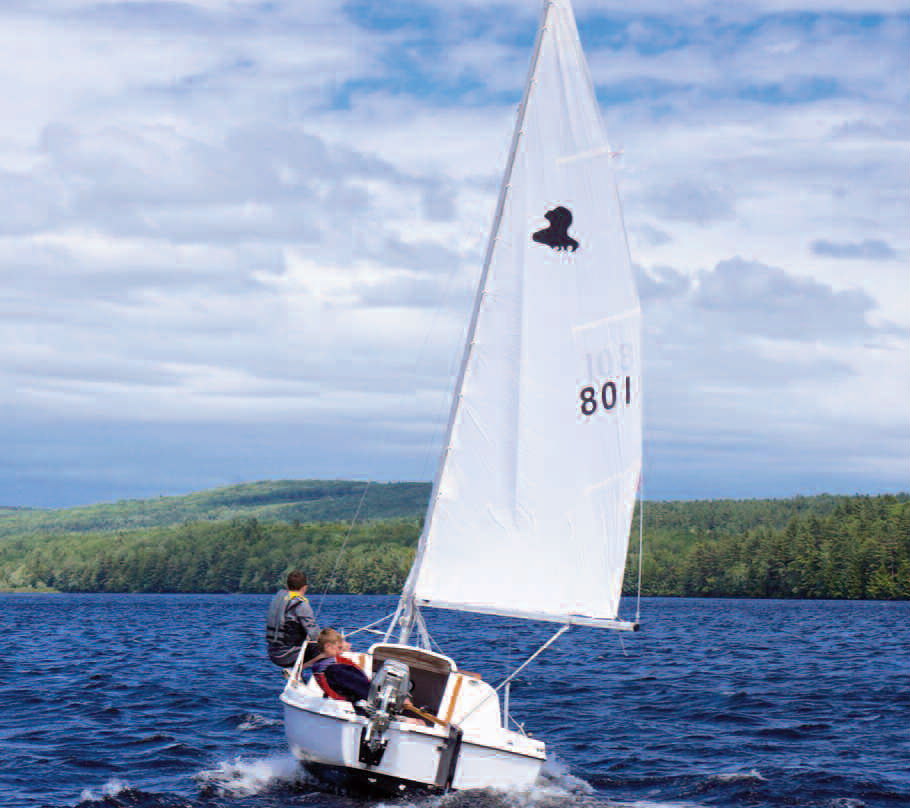
David Tyndall, of Kittery, photographed these teens sailing on Sheepscot Lake, in Palermo.
by Carolyn Viens
Sheepscot Lake Association
Water quality testing on Sheepscot Lake has been done since 1977, initially by the Maine State DEP (Department of Environmental Protection) and for the past eight years by the Sheepscot Lake Association (SLA). Again this year, as with previous years, the testing has demonstrated the outstanding health of the lake we all enjoy throughout the year.
Approximately every two weeks from June through September the SLA tests for water clarity, dissolved oxygen from the surface down to the deepest part of the lake, and for phosphorous. The testing is done by a Lake Steward of Maine Certified Lake Monitor from the SLA Board of Directors. The water clarity is tested using a Secchi disk and scope. The Secchi disk is a plain black and white circular disk 30 cm (12 inches) in diameter used to measure water transparency or turbidity in bodies of water. The disc is mounted on a tape measure, and lowered slowly down in the water. The depth at which the disk is no longer visible is taken as a measure of the transparency of the water. This measure is known as the Secchi depth, and is considered the standard methodology for measuring water clarity.
The SLA Monitor also tests for dissolved oxygen using a YSI Pro 20 dissolved oxygen meter, and collects standardized samples for phosphorus which are analyzed in state labs to determine the amount present. The measure of total phosphorus in Sheepscot averages 7 ppb (parts per billion). The state average for tested lakes is 12 ppb. This is good news as phosphorus is a nutrient that feeds algae and other aquatic plants, all of which can become a nuisance; even to the point of requiring physical cutting and removal to allow recreational and sport activities. Fortunately, this has not been a problem in Sheepscot Lake. When this natural element lands in the water algae thrives on it. Phosphorus comes from soil that is washed into the lake from rain and snow melt as well as from fertilizer and leaking septic systems. Human development along lake shores results in five to 10 times more phosphorous than from undeveloped land. There is also a threat of additional phosphorous from fish die-offs, such as when alewives, should they be in a lake, spawn and, during low water years, cannot leave the lake at the end of their cycle.
Meanwhile, the LakeSmart program is available to any lakefront homeowner who is interested in learning how their property impacts the lake. The program provides education on how to minimize runoff from lakefront properties as well as recommendations and certification for lakefront properties. If you are interested in having your property evaluated at no cost or obligation, please email the lake association at sheepscotlakeassoc@gmail.com. Some general guidelines for minimizing impact to the lake is to leave trees in place as they slow down rain water, create a shorefront buffer of natural leaves, pine needles, ground cover and native shrubs. Mow grass to a three-inch height minimum and leave the clippings on the ground. Or, better yet, eliminate grass and encourage native vegetation to hold the soil back from entering the lake. Make paths meander so water won’t rush straight down into the lake. Maintain camp roads to slow down erosion.
In addition to the lake quality testing regularly performed and the LakeSmart program, SLA also manages an invasive plant patrol. This courtesy boat inspection (CBI) program is funded mostly by grants from the town of Palermo, Maine DEP and SLA member dues. The CBI program regularly inspects boats entering and exiting Sheepscot via the boat launch. The goals are to identify any invasive species plant parts hitchhiking into the lake by accident prior to a boat being launched and to emphasize boat self-inspection. Fortunately, Sheepscot Lake does not have any known invasive plants at this time. Lakes with this problem often spend thousands of dollars each year to control their infestation. The Sheepscot Lake Association can help you understand the threats and the solutions. You do not need to be an association member to receive these benefits.
Sheepscot Lake continues to be a wonderful resource for all Palermo residents and visitors to enjoy. With the continued attention on the health of the lake by us all, we will help it thrive for many, many years to come. To learn more about how you can help protect Sheepscot, please contact the lake association at sheepscotlakeassoc@gmail.com.
Enjoy the remainder of the summer!



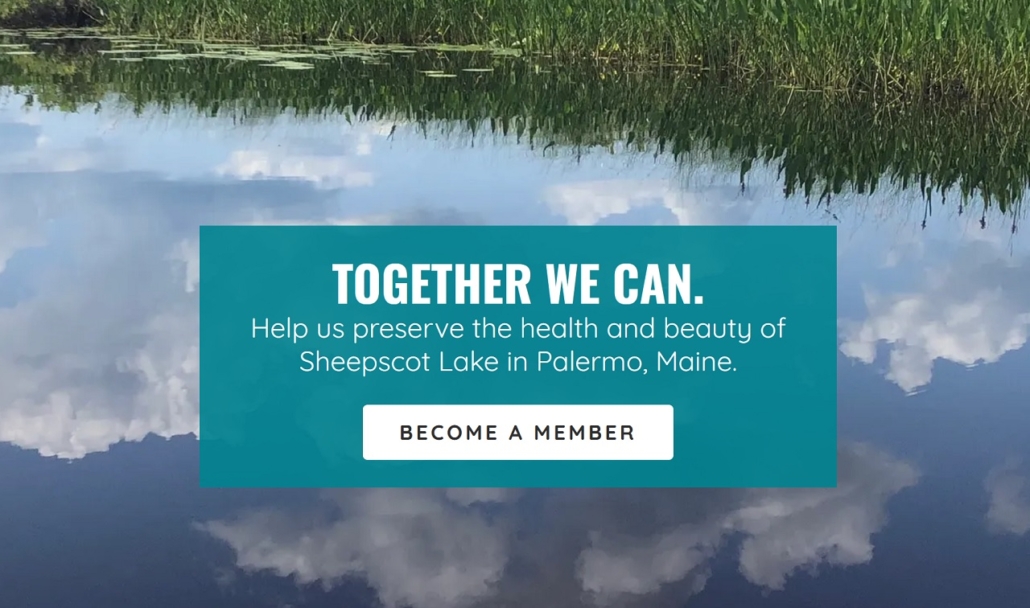 The Sheepscot Lake Association (SLA) has recently launched a new website to update members and the community of the SLA’s programs and activities, as well as general information about the lake and the association. Please check it out, bookmark it and pass it along to neighbors, family and friends who may be interested:
The Sheepscot Lake Association (SLA) has recently launched a new website to update members and the community of the SLA’s programs and activities, as well as general information about the lake and the association. Please check it out, bookmark it and pass it along to neighbors, family and friends who may be interested:  by Slater Claudel
by Slater Claudel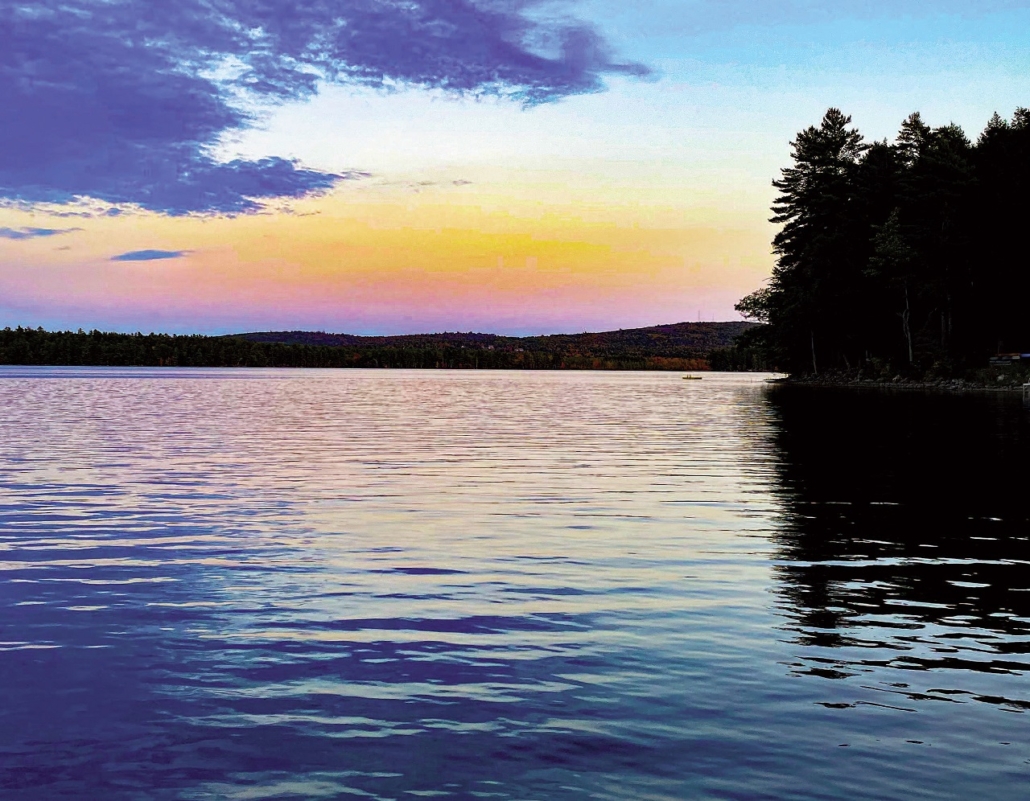
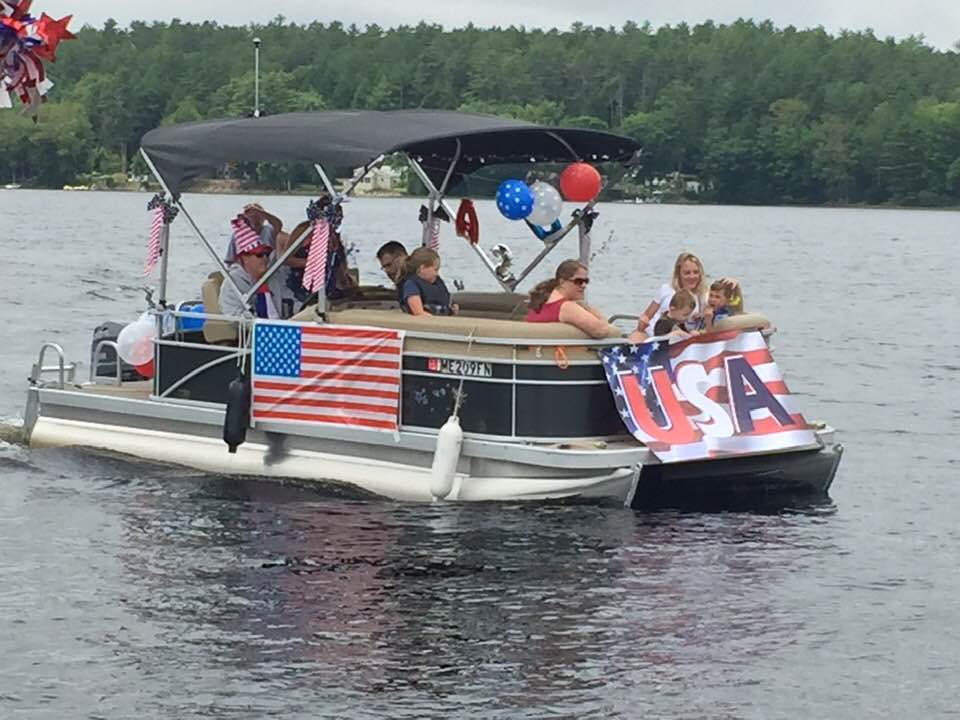


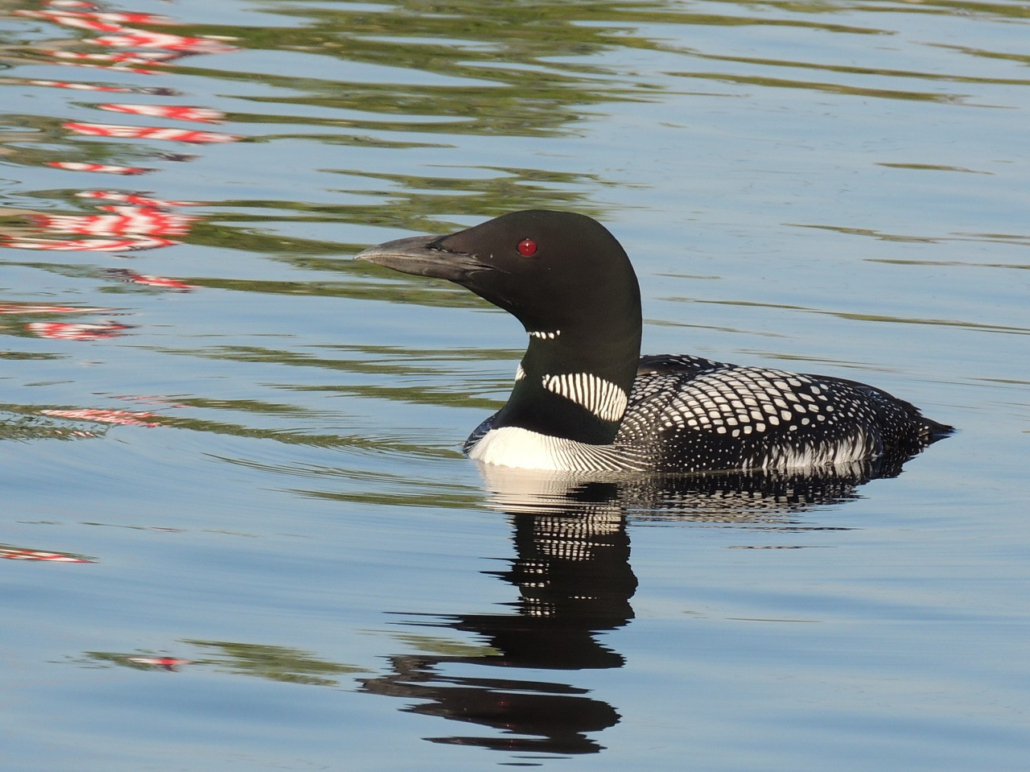
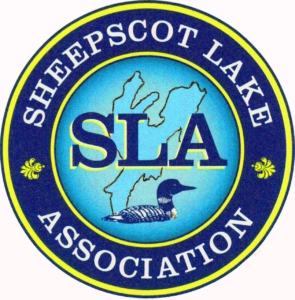
 Sheepscot Valley Chorus celebrates its 39th season with a “Christmas Pops!” concert on Sunday, December 8, at 3 p.m., at the Boothbay Harbor Congregational Church. Led by artistic director Linda Blanchard and accompanist Sean Fleming, the concert will feature Felix Mendelssohn’s brilliant Magnificat setting, the Magnificat in D. The concert will also include several jazzy arrangements of hit tunes such as “It’s the Most Wonderful Time of the Year,” “The Grinch Who Stole Christmas,” “The Christmas Song (Chestnuts Roasting on an Open Fire),” “I’ll Be Home for Christmas,” and more! The vocal talents of soprano Mary Sullivan, alto Jazmin DeRice, tenors Jesse Wakeman and David Myers, Jr., and bass John David Adams will be featured in solos, duets, and trios, and a jazz combo will accompany the chorus on several numbers.
Sheepscot Valley Chorus celebrates its 39th season with a “Christmas Pops!” concert on Sunday, December 8, at 3 p.m., at the Boothbay Harbor Congregational Church. Led by artistic director Linda Blanchard and accompanist Sean Fleming, the concert will feature Felix Mendelssohn’s brilliant Magnificat setting, the Magnificat in D. The concert will also include several jazzy arrangements of hit tunes such as “It’s the Most Wonderful Time of the Year,” “The Grinch Who Stole Christmas,” “The Christmas Song (Chestnuts Roasting on an Open Fire),” “I’ll Be Home for Christmas,” and more! The vocal talents of soprano Mary Sullivan, alto Jazmin DeRice, tenors Jesse Wakeman and David Myers, Jr., and bass John David Adams will be featured in solos, duets, and trios, and a jazz combo will accompany the chorus on several numbers.